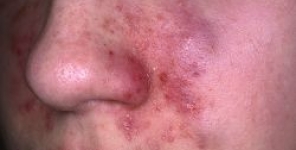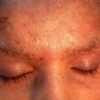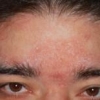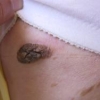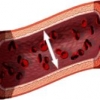Reazioni cutanee simpatiche dello scalpo evocate attraverso la stimolazione elettrica, nella dermatite seborroica
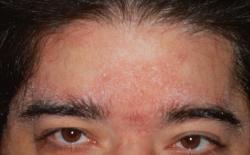 Anche se il ruolo del sistema nervoso autonomo nella dermatite seborroica (DS) non è tuttora chiaro, la seborrea è a volte accettata come segno di disfunzione autonomica in diverse malattie del sistema nervoso.
Anche se il ruolo del sistema nervoso autonomo nella dermatite seborroica (DS) non è tuttora chiaro, la seborrea è a volte accettata come segno di disfunzione autonomica in diverse malattie del sistema nervoso.
Pertanto, abbiamo voluto studiare l'attività del sistema nervoso simpatico (SNS) nel contesto di SD, registrando le reazioni cutanee simpatiche (SSR) dallo scalpo (S-SSR). Trentuno soggetti di controllo e 22 pazienti con SD sono stati studiati evocando una S-SSR destra e sinistra con la stimolazione elettrica del nervo mediano destro a livello del polso.
Sono state calcolate le latenze medie e le massime ampiezze per entrambi i lati di ciascun gruppo. In sette soggetti di controllo su 31 e, in 13 pazienti su 22, non è stato possibile raggiungere l'S-SSR da entrambi i lati.
Ci sono stati quattro soggetti con risposta unilaterale nel gruppo dei pazienti. C'è stato un numero molto maggiore di soggetti che non ha risposto tra i pazienti con SD (P < 0.000). Questo studio suggerisce che in SD, potrebbe essere coinvolto il sistema nervoso autonomo. La S-SSR è un nuovo sito per la registrazione di SSR. Le risposte sono state relativamente simmetriche e possono essere facilmente evocate con la stimolazione elettrica, e questo potrebbe essere utilizzato per valutare la funzione di SNS nei pazienti con SD ed anche nei soggetti sani.
Storia della pubblicazione:
Titolo: Sympathetic skin responses from the scalp evoked by electrical stimulation in seborrheic dermatitis
Rivista: The Journal of Dermatology. doi: 10.1111/1346-8138.12114
Autori: Burcu Altunrende, Serpil Yildiz, Basak Kandi, Nebil Yildiz
Affiliazioni:Department of Neurology, Istanbul Bilim University Medical Faculty, Istanbul, Turkey Department of Neurology, Abant Izzet Baysal University, Izzet Baysal Medical Faculty, Bolu, Turkey Department of Dermatology, Abant Izzet Baysal University, Izzet Baysal Medical Faculty, Bolu, Turkey
Abstract:
Although the role of autonomic nervous system in seborrheic dermatitis (SD) is still unclear, seborrhea is sometimes accepted as a sign of autonomic dysfunction in several nervous system diseases. Therefore, we aimed to investigate the sympathetic nervous system (SNS) activity in SD by recording sympathetic skin responses (SSR) from the scalp (S-SSR). Thirty-one control subjects and 22 SD patients were studied by evoking right and left S-SSR with electrical stimulation of the right median nerve at the wrist. Mean latencies and maximum amplitudes were calculated for both sides in each group. In seven out of 31 control subjects and in 13 out of 22 patients, the S-SSR could not be elicited on either side. There were four subjects with unilateral response in the patient group. There were significantly more non-responders among the patients with SD (P < 0.000). This study suggests that in SD, the autonomic nervous system may be involved. The S-SSR is a new site for recording SSR. The responses are relatively symmetrical and can be evoked easily by electrical stimulation, and may be used to evaluate the SNS function in SD patients and also in healthy subjects.
